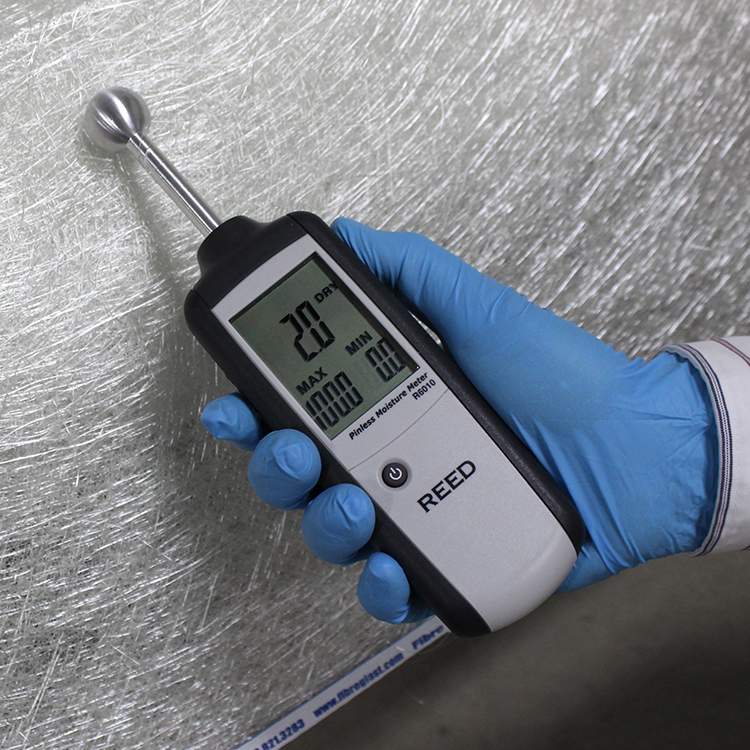The Scientific Research Behind Moisture Meters: Just How They Function and Why They're Necessary
The Scientific Research Behind Moisture Meters: Just How They Function and Why They're Necessary
Blog Article
Explore the World of Moisture Meters: Every Little Thing You Need to Know
In the realm of moisture meters lies a globe of precision and functionality that typically goes unnoticed. These tools, while relatively simple, hold a wide range of information that can dramatically impact different industries and applications. Recognizing just how moisture meters run, the different kinds available, and their diverse uses can shed light on their significance in making certain top quality and performance. By exploring the complexities of moisture meters, one can reveal a useful tool that transcends simple dimension, offering insights that can make a significant difference in countless fields.
How Moisture Meters Work
Moisture meters run by gauging the electric conductivity or capacitance of products to determine the moisture content existing. These meters are important tools throughout numerous industries, including agriculture, building and construction, and woodworking. By utilizing different methods such as pin-type or pinless innovation, wetness meters give accurate analyses that aid specialists make informed decisions.
Pin-type wetness meters work by placing the sharp pins right into the material being examined. On the various other hand, pinless moisture meters make use of electro-magnetic signals to scan a larger location without triggering any damages to the material's surface area.
Despite the technique used, wetness meters play an important duty in stopping concerns such as mold and mildew development, architectural damages, or item problems triggered by excess wetness. Comprehending how these meters work is important for ensuring the high quality and stability of materials in different applications.
Kinds Of Moisture Meters
Provided the essential function dampness meters play in various industries, it is vital to understand the different kinds readily available to professionals for properly evaluating dampness degrees - Moisture Meter. There are mostly 2 primary kinds of moisture meters: pin-type and pinless moisture meters

On the other hand, pinless dampness meters utilize electromagnetic sensing unit plates to scan a larger location of the product without triggering any damages. This type is appropriate for swiftly scanning huge locations and is typically used for flooring, walls, and ceilings. Pinless meters are convenient for taking readings on finished surfaces without leaving any noticeable marks.
Both kinds of wetness meters have their advantages and are selected based on the certain needs of the job available. Understanding the distinctions in between these kinds is essential for experts to make precise dampness evaluations.
Applications Throughout Industries
Construction experts depend on moisture meters to analyze the dampness degrees in structure materials like drywall, concrete, and wood, which is essential for keeping architectural integrity and stopping issues like rot or mold. The floor covering market makes use of wetness meters to determine the moisture material in subfloors prior to setting up various flooring treatments, avoiding pricey problems due to excess wetness. In the food industry, moisture meters are utilized to check and manage moisture degrees in products such as grains, nuts, and dried fruits to preserve freshness and high quality.
Tips for Making Use Of Dampness Meters
Use the moisture meter's calibration setups to make certain exact analyses when determining the wetness web content in numerous products. Furthermore, make sure the meter is set to the right moisture variety for the product you are determining to acquire the most exact outcomes.
When making use of a pin-type wetness meter, put the pins to the appropriate depth advised for the material being evaluated. This ensures that the dampness analyses are taken from the appropriate depth within the product, supplying an extra exact depiction of its moisture web content. For pinless dampness meters, bear in mind to maintain correct contact with the product's surface area to get dependable analyses.
Routinely check and change the batteries in your wetness meter to avoid imprecise analyses because of reduced power. Shop the meter in a safe and completely dry location when not being used to extend its life-span and maintain its precision. By complying with these suggestions, you can maximize the performance of your wetness meter and obtain accurate moisture content dimensions throughout different materials.
Maintenance and Calibration
To ensure the accuracy of moisture material dimensions, regular maintenance and calibration of the wetness meter are essential steps in its appropriate functioning. Calibration changes the dampness meter to make certain that it supplies constant and reliable results.
Calibration must be done occasionally, particularly if the dampness meter is used frequently or in critical applications where specific measurements are needed. Lots of moisture meters feature calibration devices or can be calibrated by professional services. Moisture Meter. It is advised to keep a log of calibration days and results to track the performance of the moisture meter over time. By maintaining and adjusting the moisture meter regularly, customers can trust the precision of the dampness web content measurements click site obtained.
Final Thought

Finally, moisture meters play a vital role in different industries by precisely gauging the moisture content of products. Comprehending just how these devices function, the various kinds available, and appropriate upkeep and calibration are important for acquiring trustworthy outcomes. Whether in farming, building, or manufacturing, using wetness meters assists guarantee quality assurance and effectiveness in processes.

In conclusion, moisture meters this play an essential role in various markets by accurately measuring the moisture material of products.
Report this page